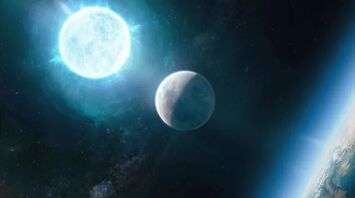Astronomers have detected what may be a ‘future Earth’ eight billion years from now

Astronomers have observed a distant planet that provides a glimpse of Earth's possible future, approximately eight billion years from now. This rocky planet, named KMT-2020-BLG-0414, is about twice the size of Earth and orbits a white dwarf 4,000 light-years away from us. Our sun is expected to become a white dwarf in five billion years, following an expansion into a red giant that will likely consume Mercury, Venus, and perhaps Earth and Mars. If spared, Earth could resemble this distant world as it drifts further from the cooling remains of the sun, as described in the journal Nature Astronomy on September 26.
Keming Zhang, of the University of California, San Diego, mentioned that there is no consensus on whether Earth will avoid being swallowed by the sun's red giant phase, which is expected to occur in six billion years. However, Zhang noted that Earth's habitability is only expected to last another billion years due to the runaway greenhouse effect, which would vaporize the oceans long before Earth faces the red giant threat.
For the majority of their lifespans, stars burn via the fusion of hydrogen into helium. After exhausting their hydrogen, they begin fusing helium, generating a massive energy surge that causes them to expand significantly and potentially absorb nearby planets. This distant planetary system, detected in 2020 near the Milky Way's center, acted as a gravitational lens, making it visible when it passed in front of a more distant star 25,000 light-years away. Alongside the planet, the system also includes a brown dwarf, which has about 17 times Jupiter's mass but failed to ignite as a star.
The long-term fate of humanity remains uncertain. Scientists debate whether life can survive the sun's red giant phase or if warming can be stopped to prevent ocean vaporization. Zhang speculates that humanity might migrate to the currently icy moons Europa and Enceladus, orbiting Jupiter and Saturn, which are expected to become water worlds as the sun turns into a red giant. As these moons become oceanic planets, they could potentially serve as new homes for future humans.
Earlier, SSP wrote that a study suggested new treatment for spinal cord injuries.



















